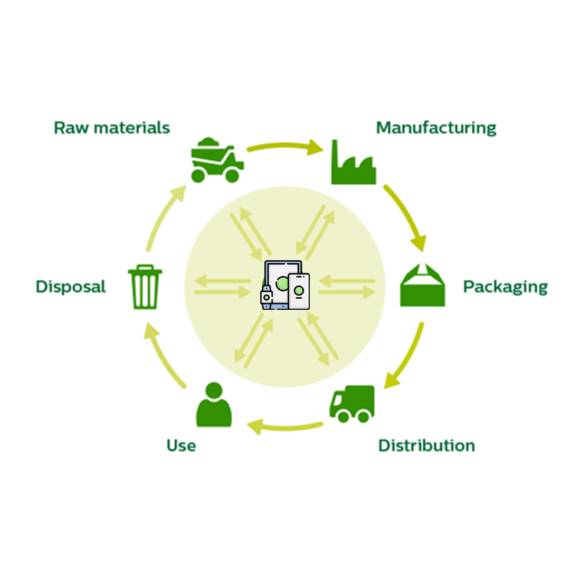
How Smart Home Technology Contributes to E-Waste?
Imagine a world where your lights turn on automatically as you walk in the door, your coffee starts brewing the moment you wake up, and your thermostat adjusts the temperature based on your preferences. This isn’t science fiction; it’s the reality of smart home technology.
In recent years, there’s been a surge in the popularity of smart home devices. Homeowners are increasingly integrating devices like smart thermostats, voice-activated assistants, automated lighting systems, and connected security cameras into their daily lives. This is all happening due to increased convenience, energy efficiency, and enhanced security. As people embrace these innovations, it’s essential to consider the environmental impact, particularly the issue of electronic waste (e-waste).
Lifecycle of Smart Devices
Like all electronics, smart home devices have a lifecycle that includes manufacturing, usage, and disposal. Understanding this lifecycle is crucial to comprehending how these technologies contribute to e-waste.
Manufacturing and Distribution
The lifecycle of a smart device begins with its creation. It involves several stages:
• Raw Material Extraction: The first step is obtaining the raw materials needed to manufacture smart devices. These materials include metals like gold, silver, copper, and rare earth elements. Mining these materials can be environmentally destructive and energy-intensive.
• Manufacturing and Assembly: Once the raw materials are extracted, they are transported to factories and processed into smart devices. This stage includes designing the components, putting them together, and installing the necessary software.
• Distribution: After assembly, the devices are packaged and shipped to retailers or directly to consumers. This stage involves logistics and transportation, which also have an environmental impact.
Usage: Once in use, smart home devices offer significant benefits such as energy savings, enhanced security, and improved quality of life. However, these devices often rely on regular software updates and connectivity to function optimally. As technology advances, newer models with better features and improved performance are released, prompting consumers to upgrade their devices frequently.
Disposal: The final stage is when devices become obsolete or non-functional. Consumers frequently replace old gadgets with newer, more advanced models. As newer models become available, older devices are often discarded. This disposal stage is where e-waste becomes a significant issue. Many smart devices contain hazardous materials that can be dangerous to the environment if not handled properly.
Factors Contributing to E-Waste from Smart Home Technology

Rapid Technological Advancements
Every year, new models are released with better features, faster performance, and more integration options. This constant stream of new technology quickly makes older devices seem outdated. Many people are tempted to upgrade to the latest smart thermostat, security camera, or voice assistant, even if their current devices are still working fine. This trend leads to many older devices being discarded, adding to the growing e-waste problem.
Planned Obsolescence
Some manufacturers intentionally design products to have a limited lifespan. This strategy, known as planned obsolescence, encourages consumers to buy new devices more frequently. For example, a smart home device might be built with cheaper materials that wear out faster or receive software updates that slow it down over time. As a result, consumers are pushed to replace their devices sooner than necessary, which increases the amount of e-waste.
Non-repairable Design
Many smart home devices are designed in a way that makes repairs difficult or impossible. Components are often glued or soldered together, making opening the device and replacing faulty parts challenging. For example, a smart speaker might have its battery sealed within the casing, making it impossible to replace without specialized tools and expertise. This design choice discourages repairs and promotes the disposal of the entire device when a single component fails. Additionally, the cost of professional repairs can be prohibitively high, leading consumers to opt for new purchases instead of repairing existing devices.
Limited Recycling Options
Recycling smart home devices can be challenging. Many municipalities do not have the facilities to handle electronic waste properly, and not all recycling centers accept smart devices. Even when recycling options are available, the process can be complicated and inconvenient for consumers. As a result, many smart devices end up in landfills instead of being recycled, leading to environmental contamination and wasted resources.
Marketing and Consumerism
Tech companies’ aggressive marketing strategies play a significant role in driving consumer behavior. Constant advertising of the latest and greatest smart home devices creates a sense of urgency to upgrade. Promotions, discounts, and new feature rollouts are designed to entice consumers to buy new products, even when their existing devices are still functional. This culture of consumerism leads to a higher turnover of devices and, consequently, more e-waste.
Final Quote!
The rise of smart homes is a thrilling chapter in technological innovation. However, it’s crucial to be mindful of the environmental consequences. By making informed choices as consumers and adopting responsible disposal practices, we can ensure that our smart homes contribute to a smarter, more sustainable future. Remember, a little planning and conscious effort can go a long way in keeping your home and our planet healthy.
Read Our More Blogs:
Impact of E-Waste on Developing Countries
E-Waste Management in Developed vs. Developing Countries
Follow us:







